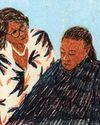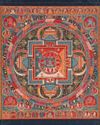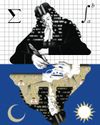
Everyone hopes for a miracle. And in Kenya—where evangelical Christianity is so popular that the President frequently prays with preachers during official events—the more miracles a pastor performs, the more followers he will gain. Some swiftly build large congregations and become multimillionaires. In 2018, Halua Yaa, a woman in the coastal town of Malindi, heard about a pastor named Paul Mackenzie, who, it was said, could heal the sick. Yaa’s eight-year-old granddaughter, Bright Angel, had mysterious symptoms: she had severe stomach pains and often threw up after eating. “She looked like she was going to die,” Yaa told me recently. Doctors gave her medicine and an I.V. drip, but nothing helped. “I went to the hospital for almost a year and a half, and there were no changes,” Yaa said. When she heard that Mackenzie was holding a “crusade” in Malindi—a kind of religious festival—she decided to attend. “You feel like, if Mackenzie can talk with Jesus for him to do miracles, he can also tell Jesus to take away this disease,” she said.
Yaa is fifty-four and petite, with full cheeks, cornrows, and a mischievous sense of humor. The previous decade had been difficult for her. After ten years of marriage, her husband left her for another woman, and she was forced to raise six children on her own. She developed a condition that caused her to lose sight in one eye. But she was smart and industrious; she started a café and eventually a farm in the countryside, built a home, and sent her children to school. Then, in 2010, one of her teen-age daughters got pregnant, and Yaa took on the responsibility of raising her granddaughter, too. She came to believe that this time in her life had been so painful because she was not devout enough, and found comfort going to a Catholic church. “Even if your heart is down, the word of God makes you hope,” she said.
This story is from the August 26, 2024 edition of The New Yorker.
Start your 7-day Magzter GOLD free trial to access thousands of curated premium stories, and 9,000+ magazines and newspapers.
Already a subscriber ? Sign In
This story is from the August 26, 2024 edition of The New Yorker.
Start your 7-day Magzter GOLD free trial to access thousands of curated premium stories, and 9,000+ magazines and newspapers.
Already a subscriber? Sign In

MEAN TIME
“Hard Truths.”

ENLIGHTEN ME
The secret beauty of mandalas.

THE BEST OF THEM
His was a genius for the ages. Will Gottfried Leibniz ever get his due?

DEATH CULT
Yukio Mishima’ tortured obsessions were his making—and his unmaking.

Prophecy
The night of Dev’s twenty-second birthday, he was invited to sit with the elders after dinner.

A TALE OF TWO DISTRICTS
Lauren Boebert and Colorado’s red-blue divide.

THE TIKTOK TRAIL
Andean migrants draw others to the U.S. with videos depicting themselves as living the American Dream.

LOVE AND THEFT
Did a best-selling romantasy novelist steal another writer's story?

OUR NEW TWO-FACTOR AUTHENTICATION SYSTEM
Our two-factor authentication system is expanding because text messages and e-mailed codes are becoming less secure. Also, we’re committed to making sure your log-in process is more of a hassle than it needs to be.

STILL PROCESSING
Why is the American diet so deadly?